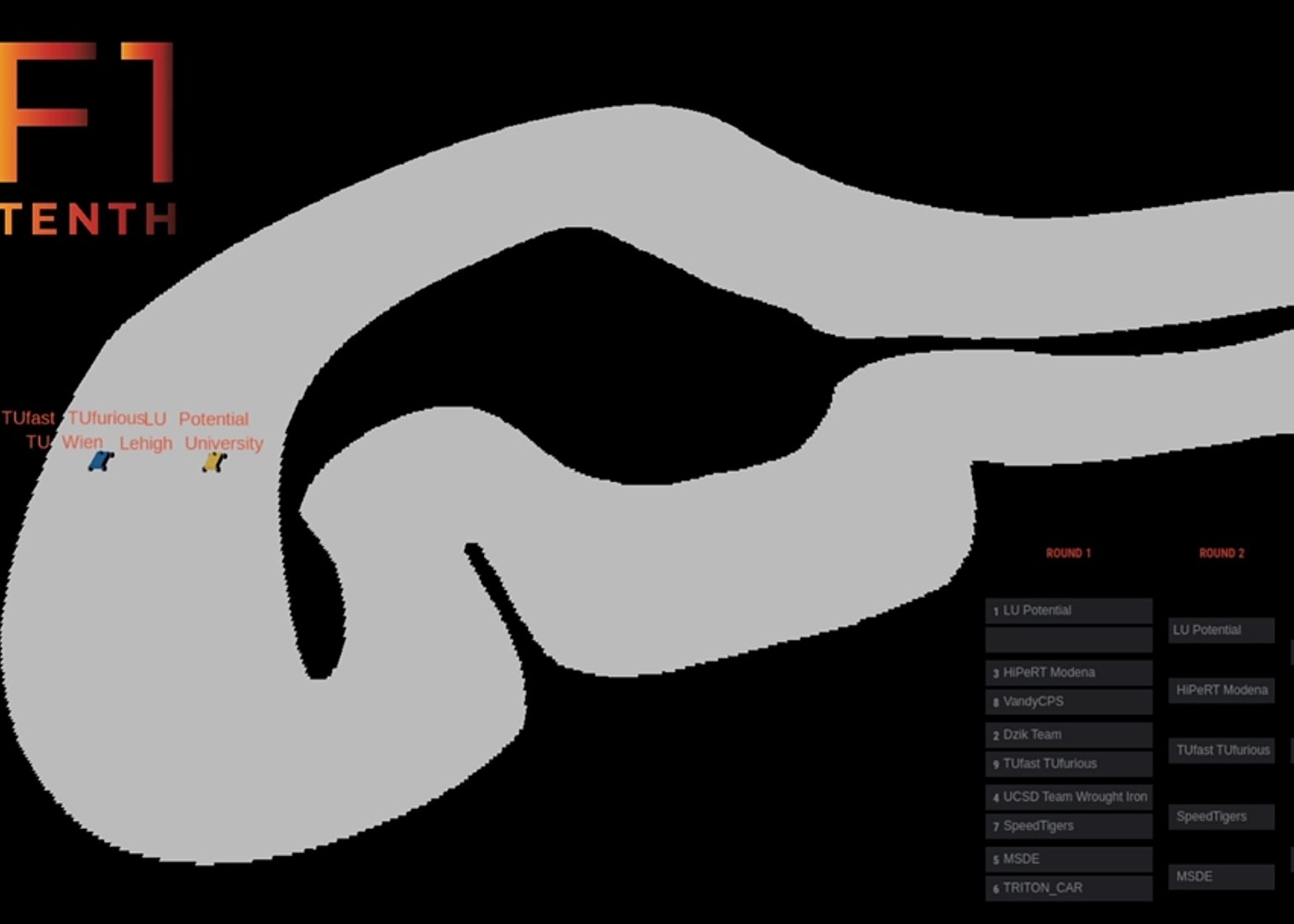TU Fast TU Furious Team Wins International Virtual Autonomous Racing Grand Prix
Racing cars with the same hardware, our team outsmarted international competitors in a battle of algorithms.

The TU Fast TU Furious Team of our research unit Cyber-Physical Systems won the F1TENTH International Virtual Autonomous Racing Grand Prix at the IFAC World Congress in Berlin on July 15, 2020, which took place online in simulation mode.
The F1TENTH is an international community of researchers, engineers, and autonomous systems enthusiasts. Their mission is to foster interest, excitement, and critical thinking about the increasingly ubiquitous field of autonomous systems. The F1TENTH Autonomous Grand Prix is a virtual race. Like in a real Grand Prix, teams first qualify to determine to seed and then compete head-to-head in an intense battle of algorithms. The teams have to develop robust perception, planning, and control algorithms that can deal with the uncertainties of a new track and new competitors since the vehicles and hardware are standardized. The Grand Prix phase pits virtual competitors against each other on the same track.
From Theory to Practice
Our team, consisting of the two main drivers Tomas Pintaric and Mathias Lechner, and Bernhard Schögl, Axel Brunnbauer and Hannes Brantner, was supervised by Andreas Brandstätter, Ramin Hasani and Radu Grosu. For winning this international competition, the students pushed the limits of smart mobility by building, coding, and racing with a 1/10 replica of formula one racing cars, called, therefore, F1Tenth, that are driven in a fully autonomous way.
All virtual racing cars were equipped with the same sensing and actuation abilities as the real F1Tenth racing cars, which were also built at TU Wien Informatics. Due to Covid-19, virtual cars alone took part in the competition. These cars ran their code in the same simulation environment provided by UPenn, the F1Tenth competition organizers. The winning team had to have the best software—this included a combination of classic control algorithms and deep neural networks (DNNs). There are AI algorithms for object detection and recognition of the track, obstacles, other cars, and perception plus control. The TU Wien Informatics team turned out to have the best of this combination, which was essential for winning the competition.
Perception, planning, and control matter: International teams race cars with the same hardware, and outsmart each other in a battle of algorithms. “ I am thrilled because the competition was the last stage of the master course Autonomous Racing Cars (ARC), which I introduced this semester at TU Wien Informatics. There were many powerful teams from all over the world. The results show that we have incredible students who can compete with any of the top universities globally,” says Radu Grosu, head of the research unit Cyber-Physical Systems. “Our goal was to beat UPenn, the initiators of this class, MIT, UC Berkeley, Stanford, and CMU, and we made it!”
Watch how TUFast TUFurious won the race.
The course material such as cars, cameras, lidars, and processors was funded by the BMBWF Infrastructure Project CPS/IoT Ecosystem.
Curious about our other news? Subscribe to our news feed, calendar, or newsletter, or follow us on social media.
